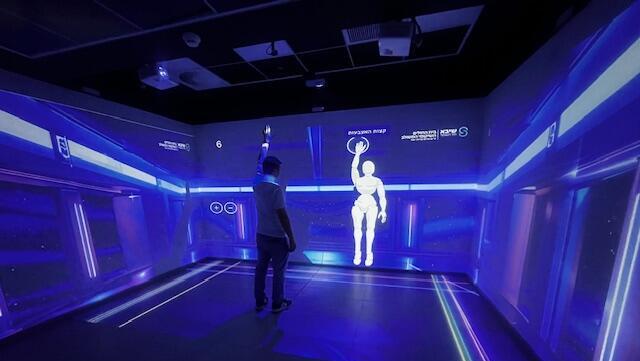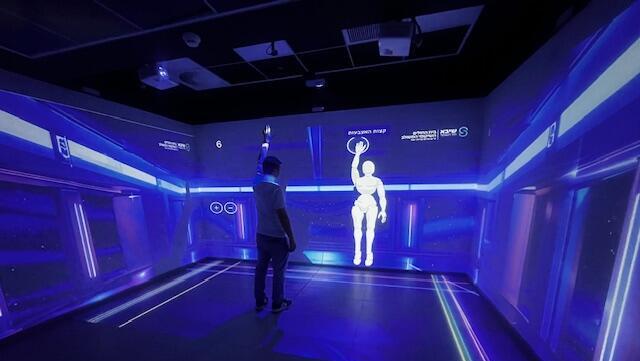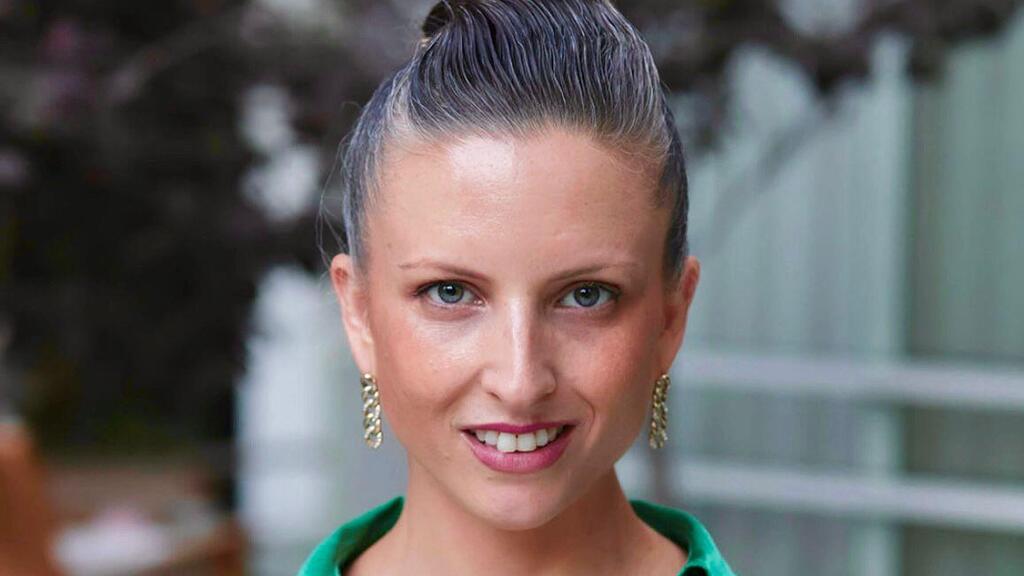
Making rehab fun: Sheba’s Immersive Rehabilitation Room
Projecting visuals onto walls and the floor, the new interactive Immersive Rehabilitation Room at Sheba Medical Center enhances patients’ therapeutic experience through advanced technology. “Rehab sessions can be repetitive and tiring,” says Sheba’s Maya Ehrlich, “but now patients want to come back again and again.”
I suddenly found myself standing on a beautiful beach. Ahead of me was clear blue water as far as the eye could see. A sense of calm immediately came over me. There was just one problem. I wasn’t at the beach. I was standing in the middle of the new Immersive Rehabilitation Room at Sheba Medical Center.
The Immersive Rehabilitation Room is an innovative space designed to enhance the therapeutic experience through advanced technology. The room features projectors and sensors that create an immersive environment by projecting visuals onto three walls and the floor. This setup provides an interactive experience for patients undergoing rehabilitation
“Although this particular room at Sheba was inaugurated just a month ago, the technology itself is not new,” Maya Ehrlich, the innovation coordinator at Sheba's Integrated Rehabilitation Hospital and a rehabilitation psychologist, said as she switched the beach scene to a forest, then a shopping mall, and finally to something called Sheba Gym, a fun rehab workout. “In fact, this type of room has already been implemented in about 60 schools across Israel for educational purposes. The technology belongs to a British company named Immersive and we work with their Israeli distributor, Totally Interactive.
"When we showed it to Prof. Amitai Ziv, Director of Sheba’s Integrated Rehabilitation Hospital, and Prof. Israel Dudkiewicz, head of Sheba’s Rehabilitation Hospital division, they saw the potential and believed it could be wonderful for rehabilitation. To the best of my knowledge, we at Sheba are the first, certainly in Israel and perhaps in the world, to take this technology and designate it for rehabilitation of adults, ages 18 and over.”
It’s very cool.
“It is, for two main reasons. First, it’s interactive and immersive. Thanks to the projectors and sensors, the room transforms into a dynamic and engaging space making therapy more stimulating and enjoyable for patients. The room is equipped with an interactive system that responds to the patients' movements and actions, encouraging active participation in their rehabilitation process. For example, doing a regular rehab session can often be repetitive and tiring, but in this room the same session, which might involve the patient pressing on the wall to stop various balls projected on the wall from falling, is now a fun game.
“Second, it’s part of an easy to use content creation system (studio) that enables therapists and staff to design customized therapy sessions without the need for programming skills. Teachers all over Israel are already creating scenarios and using it. We want the same thing to happen here at Sheba’s rehabilitation hospital. We want to create a mechanism for physiotherapists, OTs, psychologists, psychiatrists, doctors, nurses, so all of their ideas can become scenarios in this special room for the benefit of rehab patients.”
3 View gallery


A patient "catches" falling balls by tapping the wall
(Photo: Integrated Rehabilitation Hospital, Sheba)
Did the creation of this room predate October 7?
“Yes, and I am proud of that," Ehrlich said. "At Sheba rehabilitation we always think of innovation, not just as a result of the war. People get injured and sick all the time. The entire staff here is always thinking of how to make Sheba a better rehabilitation hospital. But I will say that the effects of October 7 and the subsequent war did help us push this project forward much faster. There was an opportunity. We have lots of young soldiers injured in the war that benefit from this room as it is now starting to be part of their rehab. It's brand new, but the patients who already began using it want to come back and use it again and again. It’s fun for them. Our art therapists are looking for new ways to help their patients and this room provides that too.”
How successful/popular has it been so far?
“Since it opened a month ago, this room is quite popular. Since this technology was already used in schools, when we first trained Sheba rehab staff on it, it already had hundreds of educational scenarios in it. We kept the most applicable ones and put them in folders for our staff to use even before we created new ones. For example, some scenarios are games that are very suitable for rehab. It may require patients to run around the room. We both use public scenarios and private ones we created. For example, an escape room scenario requires solving mental puzzles (cognitive) and physical activity. It can be for individual patients or for groups. It's also multi-purpose, I can work with a patient on using their extremities, while also helping them get over a fear of shopping at a mall (one scenario places you in the middle of the Sheba mini-mall, patients can also enter shops and ‘purchase’ items staying under a given budget.”
Sheba has stated that the goals for the new Immersive Rehabilitation room are threefold:
1. Personalized Therapy: Tailoring rehabilitation sessions to meet the needs of patients, enhancing their recovery journey.
2. Enhanced Engagement: Utilizing immersive and interactive technologies to increase patient motivation and participation in therapy.
3. Expanding Applications: Although this technology has been primarily used in educational settings, Sheba’s goal is to adapt and expand its use for therapeutic and rehabilitative purposes, particularly for adult patients.
What else do you use the room for?
“For example, we can film a patient’s home in 360, so they can feel at home when at Sheba. We also created a scenario showing a home and how to prepare it for the return home of the patient. It’s very effective to see it visually. Any scenario you can think of, we can potentially create. We can use it for exposure therapy, if you are afraid of heights or of flying, we can simulate it here to help you deal with it. With one click we can bring the outside world here.”
Beyond rehab, what are the possibilities?
“Sheba is committed to integrating the Immersive Rehabilitation Room into our broader therapeutic programs. This includes training our staff to effectively use the technology, continuously updating and refining the content, and conducting ongoing research to assess and demonstrate the efficacy of immersive therapy. We also want to make this room available for those suffering from PTSD and other needs. We also intend to do a lot of research here and see how the new scenarios we build work with patients. It’s constantly evolving.”
















